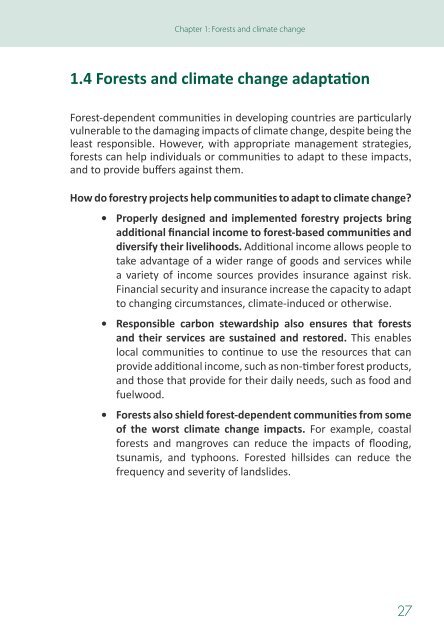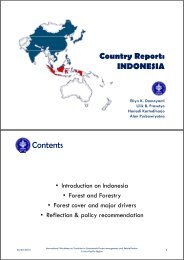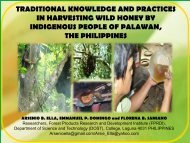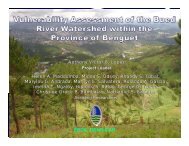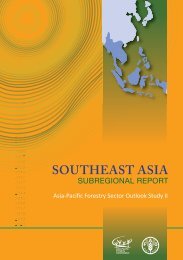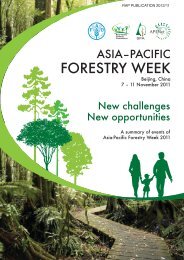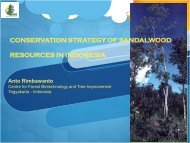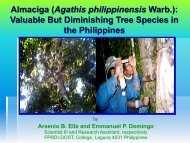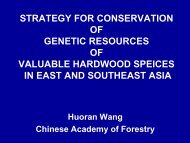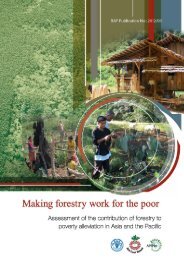Community guidelines for accessing forestry voluntary carbon ... - FAO
Community guidelines for accessing forestry voluntary carbon ... - FAO
Community guidelines for accessing forestry voluntary carbon ... - FAO
Create successful ePaper yourself
Turn your PDF publications into a flip-book with our unique Google optimized e-Paper software.
Chapter 1: Forests and climate change<br />
1.4 Forests and climate change adaptation<br />
Forest-dependent communities in developing countries are particularly<br />
vulnerable to the damaging impacts of climate change, despite being the<br />
least responsible. However, with appropriate management strategies,<br />
<strong>for</strong>ests can help individuals or communities to adapt to these impacts,<br />
and to provide buffers against them.<br />
How do <strong>for</strong>estry projects help communities to adapt to climate change?<br />
• Properly designed and implemented <strong>for</strong>estry projects bring<br />
additional financial income to <strong>for</strong>est-based communities and<br />
diversify their livelihoods. Additional income allows people to<br />
take advantage of a wider range of goods and services while<br />
a variety of income sources provides insurance against risk.<br />
Financial security and insurance increase the capacity to adapt<br />
to changing circumstances, climate-induced or otherwise.<br />
• Responsible <strong>carbon</strong> stewardship also ensures that <strong>for</strong>ests<br />
and their services are sustained and restored. This enables<br />
local communities to continue to use the resources that can<br />
provide additional income, such as non-timber <strong>for</strong>est products,<br />
and those that provide <strong>for</strong> their daily needs, such as food and<br />
fuelwood.<br />
• Forests also shield <strong>for</strong>est-dependent communities from some<br />
of the worst climate change impacts. For example, coastal<br />
<strong>for</strong>ests and mangroves can reduce the impacts of flooding,<br />
tsunamis, and typhoons. Forested hillsides can reduce the<br />
frequency and severity of landslides.<br />
27


